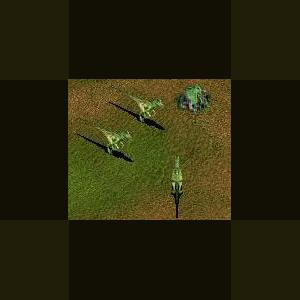About This File
Staurikosaurus ("Lizard of the Southern Cross") is a genus of early dinosaur from the Late Triassic of Brazil.
There exists only a single specimen of Staurikosaurus, recovered from the Paleontological Site Jazigo Cinco of the Santa Maria Formation in the geopark of paleorrota , Rio Grande do Sul, southern Brazil. The name refers to the star constellation "The Southern Cross", pictured in the coat of arms of Brazil and only visible in the southern hemisphere - when Staurikosaurus was described in 1970, it was unusual to find dinosaurs in the southern hemisphere. It was first described by Edwin Harris Colbert, working at the American Museum of Natural History. The rarity of Staurikosaurus remains may be a result of it being uncommon while alive, or because it lived in an environment like a forest, where fossils rarely form.
Staurikosaurus was a small theropod from the late Triassic Period, 225 million years ago - specifically the Carnian age. It is one of the earliest dinosaurs that is known. At just 2 metres in length (6.5 ft), 80 centimetres tall (31 in), and weighing just 30 kilograms (66 lb), Staurikosaurus was tiny in comparison to later theropods like Megalosaurus. Newer research seems to confirm that Staurikosaurus and the related Eoraptor and Herrerasaurus are definite theropods and evolved after the sauropod line had split from the Theropoda.
There exists very incomplete fossil record of Staurikosaurus, consisting most of the spine, the legs and the large lower jaw. However, dating from such an early period in the dinosaurs' history and being otherwise so primitive, most of Staurikosaurus' other features as being primitive also can be reconstructed. For example, Staurikosaurus is usually depicted with five toes and five fingers - very simple features of an unspecialised dinosaur. However, since the skeletal structure of the legs is known, it can be seen that Staurikosaurus was a quick runner for its size. It also had just two vertebrae joining the pelvis to the spine, a distinctly primitive arrangement. The tail would have been long and thin to balance the border - later sauropods had larger, shorter tails relative to their weight.
The recovered mandible suggests that sliding joint of the jaw allowed it to move backwards and forwards, as well as up and down. Thus smaller prey could be worked backwards towards Staurikosaurus' throat, along its small and backwards-curving teeth. This feature is common in theropods of the time, but disappears in later theropods who presumably had no need for efficiency in eating smaller prey



Recommended Comments
Create an account or sign in to comment
You need to be a member in order to leave a comment
Create an account
Sign up for a new account in our community. It's easy!
Register a new accountSign in
Already have an account? Sign in here.
Sign In Now